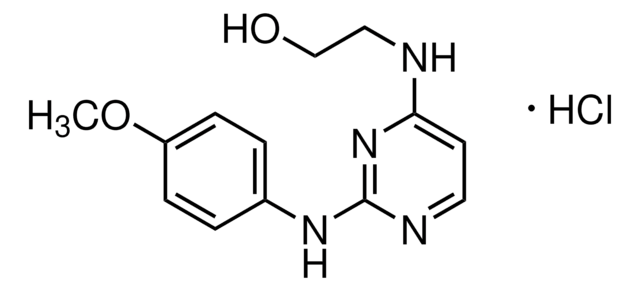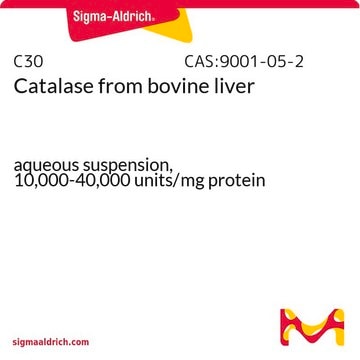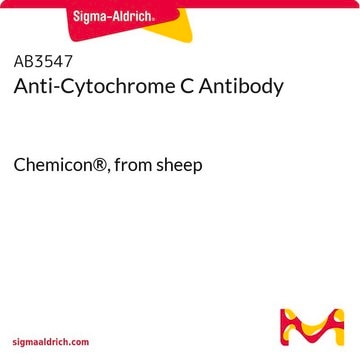C5723
Anti-Cytochrome c antibody produced in sheep
whole antiserum
About This Item
Productos recomendados
origen biológico
sheep
Nivel de calidad
conjugado
unconjugated
forma del anticuerpo
whole antiserum
tipo de anticuerpo
primary antibodies
clon
polyclonal
mol peso
antigen 14.4 kDa
reactividad de especies
human, rabbit, canine, rat
técnicas
immunoprecipitation (IP): suitable
indirect immunofluorescence: suitable
western blot: 1:5,000 using MCF-7, Rat-1, MDCK or Jurkat cell extracts
Nº de acceso UniProt
Condiciones de envío
dry ice
temp. de almacenamiento
−20°C
modificación del objetivo postraduccional
unmodified
Información sobre el gen
human ... CYCS(54205)
rat ... Cycs(25309)
¿Está buscando productos similares? Visita Guía de comparación de productos
Inmunógeno
Aplicación
Western Blotting (1 paper)
Descripción de destino
Cláusula de descargo de responsabilidad
Not finding the right product?
Try our Herramienta de selección de productos.
Opcional
Código de clase de almacenamiento
10 - Combustible liquids
Clase de riesgo para el agua (WGK)
WGK 3
Punto de inflamabilidad (°F)
Not applicable
Punto de inflamabilidad (°C)
Not applicable
Certificados de análisis (COA)
Busque Certificados de análisis (COA) introduciendo el número de lote del producto. Los números de lote se encuentran en la etiqueta del producto después de las palabras «Lot» o «Batch»
¿Ya tiene este producto?
Encuentre la documentación para los productos que ha comprado recientemente en la Biblioteca de documentos.
Nuestro equipo de científicos tiene experiencia en todas las áreas de investigación: Ciencias de la vida, Ciencia de los materiales, Síntesis química, Cromatografía, Analítica y muchas otras.
Póngase en contacto con el Servicio técnico








